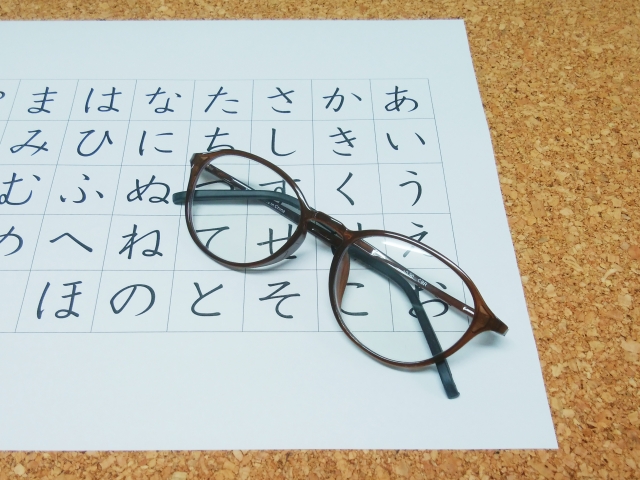それぞれの助詞について、具体的な例を挙げてご説明します。
1. 「は」:
- 「猫は可愛いです。」 - この文では、「猫」が主題であり、猫に関する情報が強調されています。
- 「昨日は雨が降りました。」 - ここでは、「昨日」が主題で、その日の天候に関する情報が述べられています。
2. 「を」:
- 「リンゴを食べます。」 - この文では、「リンゴ」が動詞「食べます」の対象となっています。
- 「本を読みます。」 - ここでは、「本」が読む対象となっています。
3. 「が」:
- 「犬が庭で遊んでいます。」 - この文では、「犬」が主語であり、庭で遊んでいることが強調されています。
- 「彼女が新しい仕事を始めました。」 - ここでは、「彼女」が主語であり、新しい仕事を始めたことが述べられています。
4. 「も」:
- 「私もリンゴを食べます。」 - この文では、「私も」という部分が「リンゴを食べます」という動作を行うことを示しています。
- 「友達も映画に興味があります。」 - ここでは、「友達も」という部分が、「映画に興味があります」という事柄を追加で述べています。
5. 「に」:
- 「学校に行きます。」 - この文では、「学校に」という部分が、行き先や到達点を示しています。
- 「友達に手紙を送ります。」 - ここでは、「友達に」という部分が手紙の送り先を示しています。
1. 「は」:
- 「猫は可愛いです。」 - この文では、「猫」が主題であり、猫に関する情報が強調されています。
- 「昨日は雨が降りました。」 - ここでは、「昨日」が主題で、その日の天候に関する情報が述べられています。
2. 「を」:
- 「リンゴを食べます。」 - この文では、「リンゴ」が動詞「食べます」の対象となっています。
- 「本を読みます。」 - ここでは、「本」が読む対象となっています。
3. 「が」:
- 「犬が庭で遊んでいます。」 - この文では、「犬」が主語であり、庭で遊んでいることが強調されています。
- 「彼女が新しい仕事を始めました。」 - ここでは、「彼女」が主語であり、新しい仕事を始めたことが述べられています。
4. 「も」:
- 「私もリンゴを食べます。」 - この文では、「私も」という部分が「リンゴを食べます」という動作を行うことを示しています。
- 「友達も映画に興味があります。」 - ここでは、「友達も」という部分が、「映画に興味があります」という事柄を追加で述べています。
5. 「に」:
- 「学校に行きます。」 - この文では、「学校に」という部分が、行き先や到達点を示しています。
- 「友達に手紙を送ります。」 - ここでは、「友達に」という部分が手紙の送り先を示しています。
What are “ha” “wo” “ga” “mo” “ni”? (Japanese particles explained)
The following explains each of these particles with specific examples.
1. “ha”
- “neko ha kawaii desu (Cats are cute).” - In this sentence, the subject is “neko (cat),” and information about cats is emphasized.
- “kinou ha ame ga furimasita (Yesterday it rained).” - Here, “kinou (yesterday)” is the subject, and information about that day's weather is given.
2. “wo”:
- “ringo wo tabemasu (I will eat an apple).” - In this sentence, “ringo (apple)” is the object of the action, “tabemasu (will eat).”
- “hon wo yomimasu (I will read a book).” - Here, “hon (book)” is the object of the action “yomimasu (will read).”
3. “ga”:
- “inu ga niwa de asondeimasu (The dog is playing in the yard).” - In this sentence, “inu (the dog)” is the subject, and the fact that the dog is playing in the yard is emphasized.
- “kanojo ga atarashii shigoto wo hajimemasita (She has started a new job).” - Here, “kanojo (she)” is the subject and it is stated that she has started a new job.
4. “mo”:
- “watashi mo ringo wo tabemasu (I eat apples too).” - In this sentence, the “watashi mo (I~too)” component indicates who performs the action “ringo wo tabemasu (eat apples).”
- “tomodachi mo eiga ni kyoumi ga arimasu (My friends are also interested in the movie).” - Here, the “tomodachi mo (my friends are also)” part adds information to the statement, “eiga ni kyoumi ga arimasu (interested in the movie).”
5. “ni”:
- “gakkou ni ikimasu (I will go to school).” - In this sentence, the “gakkou ni (to school)” part indicates a destination or goal.
- “tomodachi ni tegami wo okurimasu (I will send a letter to my friend).” - Here, the “tomodachi ni (to my friend)” part indicates the recipient of the letter.
sign up for the Japanese-Online Newsletter
__..-・**・-..__..-・**・-.._ あいうえお かきくけこ さしすせそ たちつてと なにぬねの はひふへほ まみむめも やいゆえよ らりるれろ わゐうゑを ん __..-・**・-..__..-・**・-.._
#JapaneseOnline #LearningJapanese #FreeJapaneseLessons #JapaneseVideoLearning #JapaneseAnime #Anime #JapaneseFood #Bloguru

